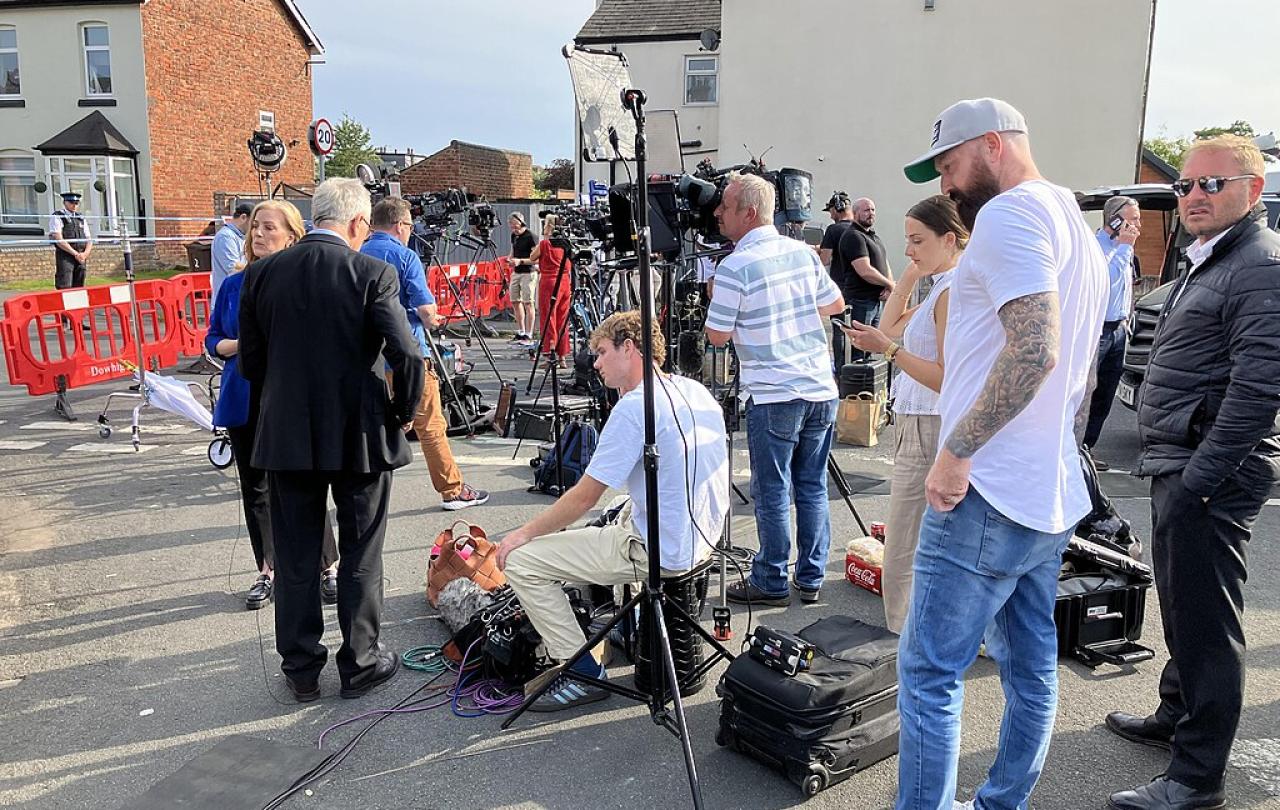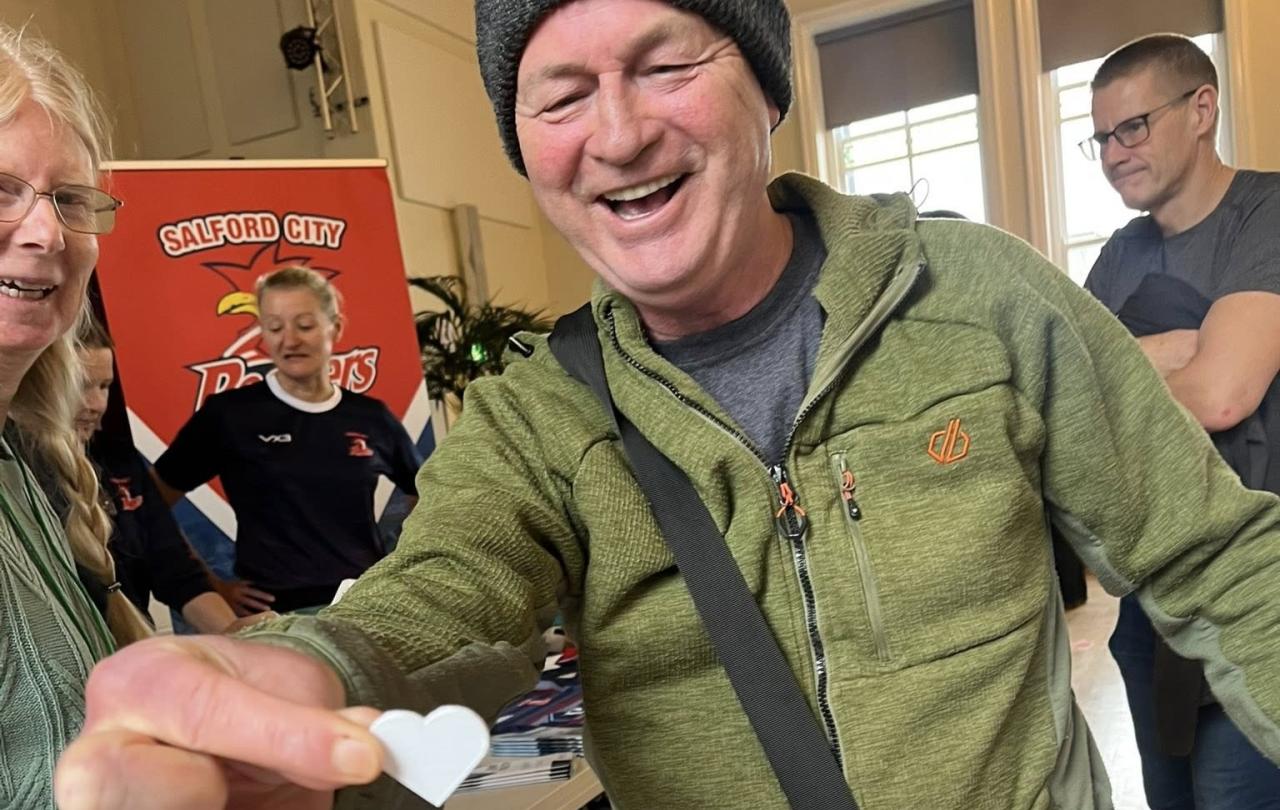
Working from home in the quiet town of Ormskirk, about four miles from Southport, the first I noticed was a cacophony of sirens accompanied by our local Facebook groups buzzing with speculation over what it was this time. The news started breaking. An incident in Southport, vague details at first but enough to start that feeling of unease.
Then the phone call and email. The local vicar and one of our Archdeacons seeking advice as inevitably the media would be looking for comment. I’ve taken a similar call many times over the 20 years I have worked with the church. It sets a mix of contradictory emotions. Selfishly you can’t help thinking there goes my plans for the day before you are sharply brought up to the knowledge that the reason for this is a tragedy for others.
Southport brought out a further emotion. When I was a student, I lived for a year close to the location of the stabbings. 30 years on and the suburban area I knew was seemingly unchanged. Yet everything was different.
The role of the press officer at this point involves navigating a tricky balance. You have a job to do, the journalists you deal with have a job to do. You are constantly fielding phone calls, jotting messages juggling time slots. You have a relentless barrage of people putting interview requests in and you want to ensure the right voices are heard and that those who represent aren’t worn out by interview upon interview.
Then you remember what caused the story in the first place. You think of the emergency services working hard to support those in need. Above all you think of the victims and the families – at that time not knowing how many or how serious. And the sense of gloom deepens as the rumours of how serious the situation spreads before you get word of a police conference fearing the worst before the worst gets confirmed.
At these times the mood amongst the media teams always feels strange. Acutely aware of the pain of the situation and sympathetic to what’s happened they can’t escape the job they have to do. I have seen this over many years mainly through the management of the press pens outside funerals at Liverpool Cathedral and churches across the region. You get to know some of the pack well, mainly and somewhat grimly reuniting at the next tragedy. They are massively co-operative with a strong sense of camaraderie, yet you can feel the pressure coming down to them from their news and picture desks. So, a sharing of resources and support occurs underpinned by a hint of journalistic competition.
The press officer’s role here is to feed the machine. It’s hungry. They have time to fill and very often, particularly so close to when the event happened, everyone is more speculative than informed. The machine needs feeding whatever and the church voice can be a calm voice of authority speaking the anxieties and wishes of the local community. However, we don’t want to be rent-a-voice, we are not helpful if we seem to be trying to grandstand over someone else’s grief. We need to show the compassion and love that our faith and Christian values teach us.
That became critically important on the second night when things turned ugly and the story was hijacked by rioting right wing mobs. Having been to the peaceful and respectful vigil on the afternoon I drove back past the scene of the stabbings on my way home. You could smell the tension in the air as people were converging on the streets exuding a purpose that did not seem like the sorrow from earlier that day.
The media aftermath for the church was then to support the efforts showing the community rebuilding whilst also calling for harmony, standing shoulder to shoulder with representatives from all faiths.
And on to the funerals.
There are many patterns to organising press coverage at a funeral. Usually, we need a pen to marshal the cameras in a way that enables them to get the pictures they need whilst maintaining a respectful, sympathetic distance. It feels there is a nigh on obligatory picture of the service order, my hand featuring in many of these shots. There is a lot of standing and waiting, clarifying the minutia of the service so the reporters can tell the story and capture the atmosphere.
Yet for me each funeral is different as I try to ensure the family’s wishes predominate. Southport was a case in point. Of the two funerals in Anglican churches (one victim was from a Roman Catholic family) one family wanted no coverage and my role was simply to make sure that wish was honoured. The other saw cameras in and around church and a full suite of reporters so we work hard with them to ensure respect. Mostly that involves a combination of setting consistent fair rules and supplying enough for them to tell the story. Journalists can cope with told they can’t do something provided their rivals are getting the same message. Lose the consistency you lose the pack as I experience outside Ken Dodd’s funeral when I had to scream at the press pack to get back in their pen before the cortege arrived.
I see this as a ministry. I have learnt techniques over the years, witnessed fights in graveyards, stood soaking waiting for the funeral to end and the coffin to leave so I can relax. Doing this is a privilege which spills over into the funerals I conduct as a priest. As do the learnings from those funerals that, in turn, inform my ministry. Get it right it becomes a fitting, respectful and dignified way for the wider community to say goodbye to a victim.
Then when it’s done we move on. The press pack to the next day’s story myself to the tasks from the routine job that I had to ditch. That’s easier for us. But the families and loved ones can’t easily move on from their pain and grief.
Support Seen & Unseen
Since Spring 2023, our readers have enjoyed over 1,500 articles. All for free.
This is made possible through the generosity of our amazing community of supporters.
If you enjoy Seen & Unseen, would you consider making a gift towards our work?
Do so by joining Behind The Seen. Alongside other benefits, you’ll receive an extra fortnightly email from me sharing my reading and reflections on the ideas that are shaping our times.
Graham Tomlin
Editor-in-Chief





